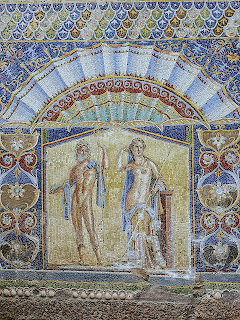Eggs and Oonoi: Symbols of birth and rebirth in the ancient world

In many myths, ranging from Egypt to the Far East, the initial process of creation and birth begins when a cosmic egg. sometimes fertilized by a serpent but more often laid in the primeval sea by a giant bird. From these sacred eggs, the sun (the golden yolk) is hatched leading to the division of earth and sky and the multiplicity of life, natural and supernatural. Eggs are well attested as funerary offerings—real eggs, artistic counterparts in marble and terracotta or diminutive vases of egg shape. Between approximately 65,000 and 55,000 years ago, African hunter-gatherers scratched on eggshells at Diepkloof Rock Shelter in South Africa. Eggs were found in the Royal Cemetery at Ur dating to 3800 BCE. In archaeological sites of predynastic Egypt (Naqada II period - 3600-3200 BCE) ostrich eggs were found in graves, partially cut and used as containers or placed in graves whole. Many of the eggs were decorated with incised or painted designs which took the form of geomet...

